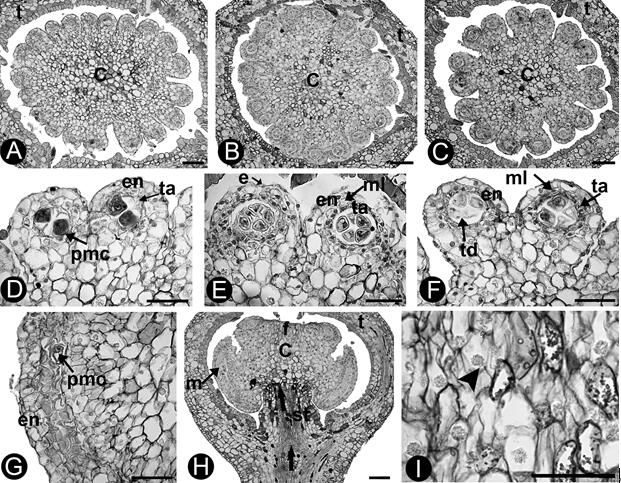Myristicaceae is classified in the Magnoliales, an order of basal angiosperms. The plants of this family are dioecious and the flowers are described as unisexual with a single perianth. The male flowers are characterized by the presence of a distinctive androecium composed of a sterile column, and longitudinally oriented anthers fused to this column, forming a synandrium. The morphology and structure of the synandria present substantial variability, making them an interesting group for androecium evolution research. To clarify the origin of the synandrium, comparative development and anatomy of the synandria of M. fragrans, H. pandurifolia, and H. tetratepala were investigated by Yang and Xu. Three types of synandrium origin were observed: in M. fragrans, the central sterile column tissues originated from the elongate receptacle; in H. pandurifolia and H. tetratepala they were derived from a combination of floral meristem and fused connectives, and a combination of receptacular tissue and stamen groups. The diverse origins of the central sterile column suggest that the synandrium develops differently and independently in different genera and species of Myristicaceae. This paper was available on the Botany (Volume 95, Issue 1, 2017).

Anatomy of staminate flower buds in Horsfieldia pandurifolia during the meiotic stage of microsporocyte development.
